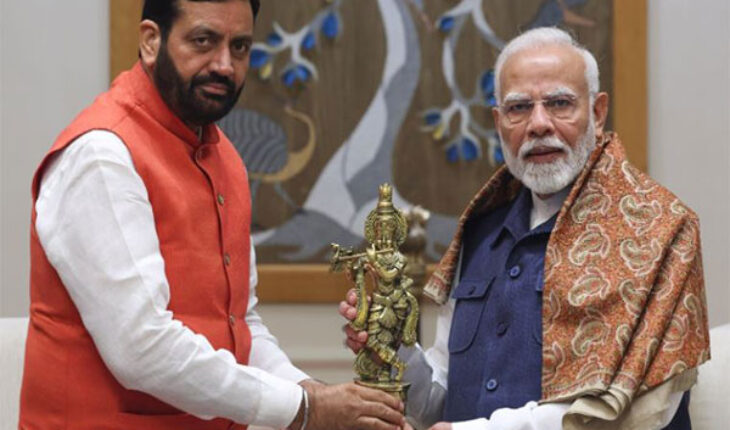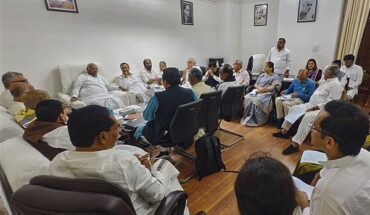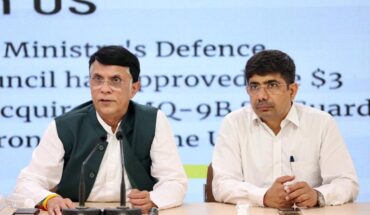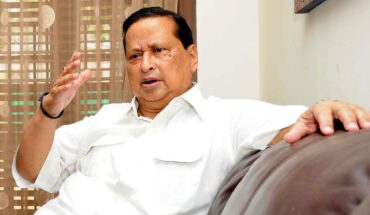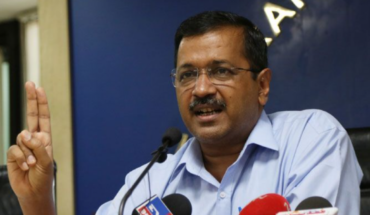Chandigarh : Following the BJP’s victory in the recent assembly election in Haryana, there is possibility of one or two deputy chief ministers in the state assembly of the next state government with Nayab Singh Saini to lead the state as Chief Minister as indicated by several senior party leaders, possibly supported by two deputy chief ministers similar to several other states with a growing trend across the country. However, the Supreme Court of India had earlier dismissed PL against deputy chief minister roles. Information reveals that last year seven out of nine states had appointed deputy chief ministers, which include Karnataka, Madhya Pradesh, Rajasthan, Meghalaya, Chhattisgarh, Telangana and Nagaland with a growing trend across Indian states and Tamil Nadu was further added to this trend, thus bringing the total number of states to 15 and the overall count of deputy chief ministers has become 24.
The increase of deputy chief ministers signifies mostly in coalition governments where the need for representation and balance among various factions is required as essential for maintaining harmony within alliances, as the former state government Haryana had appointed Dushyan Chautala of JJP as deputy chief minister who had alliance with the BJP after the election provided support of his party’s 10 ministers to form BJP-JJP alliance government in the state after 2019 assembly polls. Although, the Indian Constitution does not provide the role of deputy chief ministers holding the same rank as a cabinet minister, enjoying similar pay and perks. It cannot be denied that the role of appointment of deputy chief minister carries substantial political weight, especially in coalition scenarios, since the appointing a deputy chief minister often serves as a gesture of goodwill to the candidate of alliance party or an elected member.
According to information, the Constitution’s Articles 163(1) and 164(1) lay out the structure of the Council of Ministers and the appointment of ministers but do not reference deputy chief ministers. The reasons for appointing deputy chief ministers varies from state to state. In coalition governments, the appointments of deputy chief ministers are usually a strategic move to ensure political stability and leadership crises. In Bihar, the deputy chief ministers, Samrat Choudhary and Vijay Kumar Sinha were appointed after Nitish Kumar’s return to the NDA to consolidate its influence in the state. In Chhattisgarh, Arun Sao and Vijay Sharma were appointed deputy chief ministers after the BJP’s victory having representation of different communities from the OBC category and Brahmin. Madhya Pradesh’s deputy chief ministers, Jagdish Devda and Rajendra Shukla were also reflecting caste considerations: Scheduled Castes and Shukla being a prominent Brahmin.
Maharashtra state government had appointed two deputy chief ministers Devendra Fadnavis from the BJP and Ajit Pawar from the NCP. In Rajasthan, Deputy Chief Ministers Diya Kumari and Dr. Prem Chand Bairwa also reflect the focus on caste representation in its leadership. Similarly, Uttar Pradesh’s deputy chief ministers Keshav Prasad Maurya and Brajesh Pathak were representing OBC and Brahmin communities. Whereas, in Odisha K V Singh Deo and Pravati Parida were appointed deputy chief ministers in order to have representation from West Odisha and a prominent female face. In Meghalaya, Nagaland and Andhra Pradesh deputy chief ministers were also appointed to ensure the importance of community representation. Information also reveals that many states, especially under BJP governance, have adopted a strategy of appointing one chief minister along with two deputy chief ministers. However, Gujarat stands as an exception, as Chief Minister Bhupendra Patel had opted not to appoint a deputy CM after taking charge in 2021.
However, Andhra Pradesh made headlines in 2019 when Chief Minister Jagan Mohan Reddy appointed five deputy chief ministers, the BJP government in Karnataka made appointment of three deputy chief ministers. Since the BJP is going to form a new government in Haryana, the evolving role of deputy chief ministers is likely to shape political dynamics across states. Present political scenario reveals, in the 15th 90 members Vidhan Sabha in Haryana where poll results were declared recently on 8th October, there are 23 new faces from Congress and 13 new faces from BJP among winners, apart from two faces Anil Vij from Ambala Cantt and Dr Raghubir Kadian have won assembly polls in the state seven times on behalf of BJP and Congress respectively. Among the youngest winners include Aditya Surjewala (25) contested ther recent assembly poll on behalf of Congress from Kaithal. Among seven winners of age above 70 in the present assembly elections included Dr Raghubir Kadian (80), Ram Kumar Gautam (78), Bhupinder Singh Hooda (77), Savitrai Jindal (74), Krishna Gehlawat (73), Ram Kumar Kashyap (71) and Anil Vij (71).


